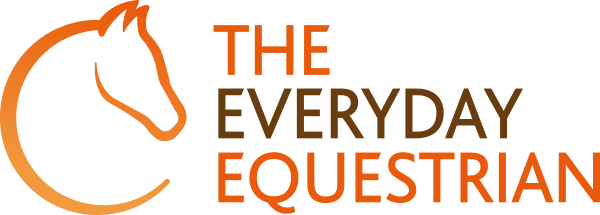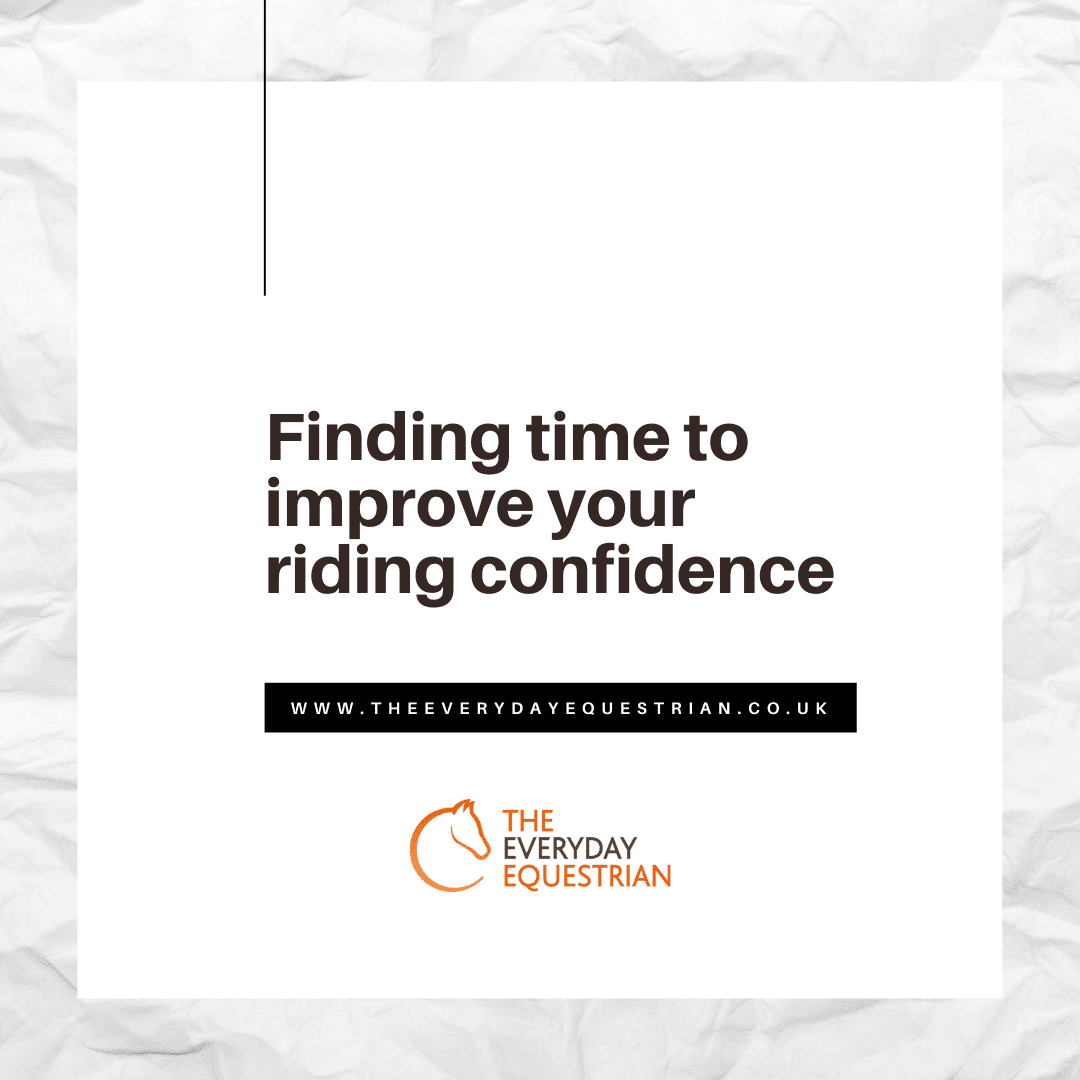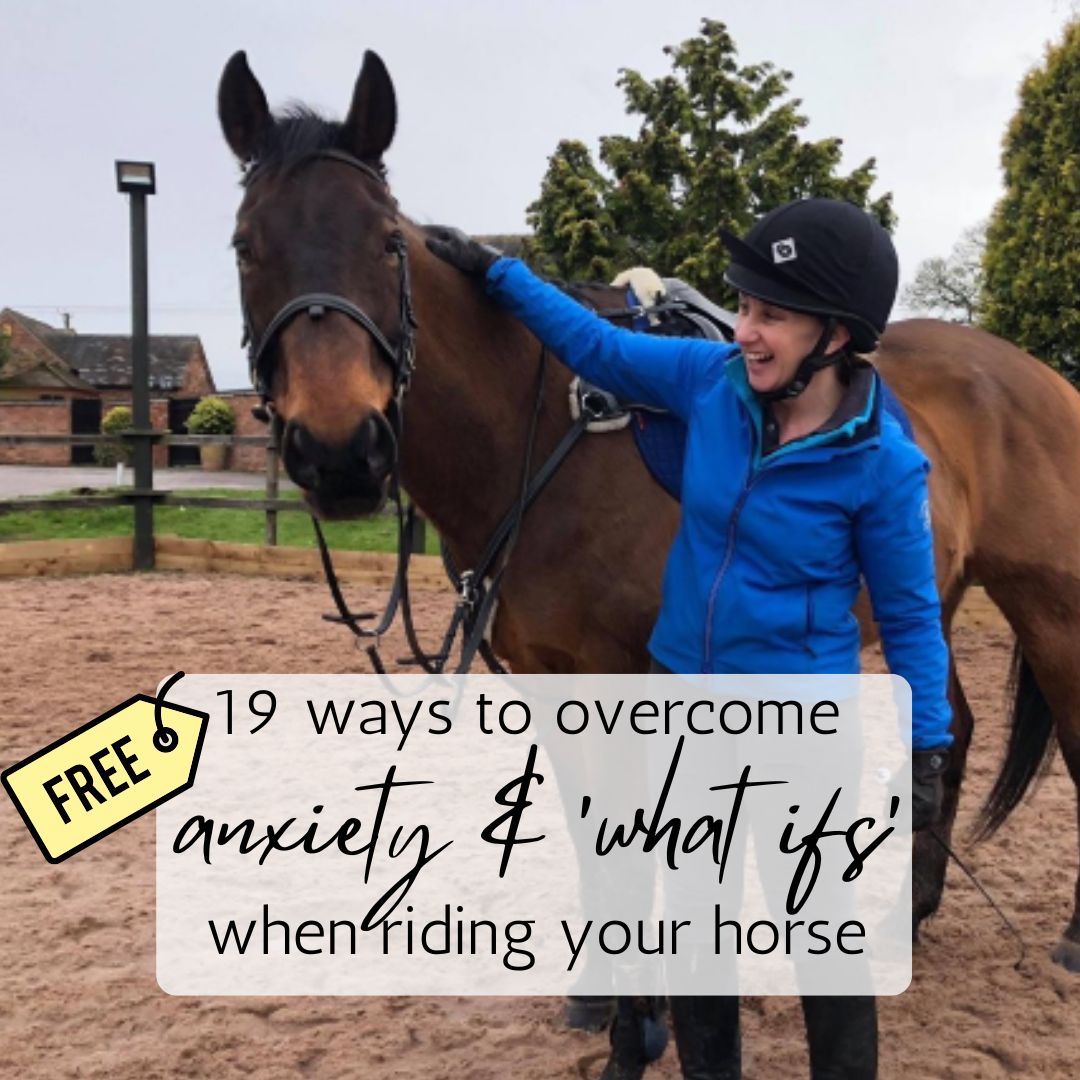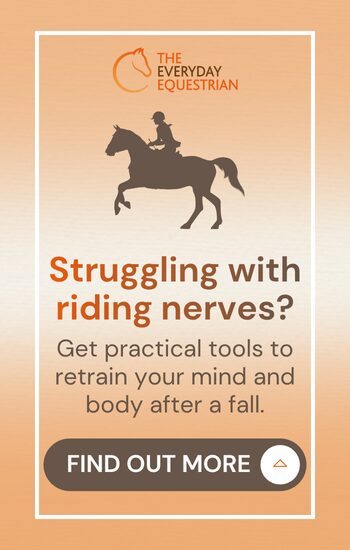As horse owners and riders, we have to put our horse’s management, care and welfare first. We invest huge amounts of time, energy and money into making sure that our horses have everything they need so that we can have lots of fun together, and achieve our equestrian goals. We have to balance this with family commitments, demanding jobs and often financial challenges, which means that ‘free time’ is in extremely short supply (if it ever really exists!).
Horse riders who struggle with a lack of confidence around their riding, often feel stuck between desperately wanting to become more positive and confident, but battle with a belief that they ‘don’t have time’. Unfortunately, this results in riders living with low confidence and mindset blocks, which simply reinforce this limiting belief, and the spiral continues.
Until riders are able to find ways to work on their confidence and mindset challenges that fit with their busy lives, then nothing will change. In this article, I’ll share some simple, effective tips to help riders, just like you, to find time to work on and improve their riding confidence. This article will show you:
- How much time you really need to build your riding confidence
- Finding time in your week
- How to stop procrastinating on your confidence issues
- Deciding how confident you want to be
How much time do you need to work on your confidence?
The honest, but slightly unhelpful answer, is that it depends on your circumstances and the types of confidence challenges you’re facing. It will also depend on the techniques and strategies you use to overcome those confidence challenges; some will work more quickly than others.
However, this really is the wrong question! It’s far more important to commit to working on your confidence and mindset around riding consistently; focus on quality over quantity. To get the most out of your confidence training, do little and often. Think of it like trickle feeding for your mind!
Finding time in your week
Life can be hectic, and if we don’t plan for the important things, they won’t happen. So even if you believe that ‘you don’t have time’, the answer is that if you want to feel differently about your riding, then you need to find the time. Now, I don’t mean that you have to spend hours each week learning and doing the exercises. Instead, it’s way more effective to find time that fits into your schedule. It could be just 10 minutes per day, 30 minutes or 1 hour per week, but the most important thing is that you plan and schedule it into your diary on a regular basis. Find the slots in your week where you will focus on yourself, so that you can become the best version of you (for or your horse, if that helps!).
Stop procrastinating on your confidence issues
Sometimes, planning things into your life and the diary is easy, but when you actually get there, you might find other things to do which are easier or more important in the moment, and it’s easy to put off working on your mindset and confidence. Yes, of course it’s important to be flexible and if something urgent and important needs to be dealt with, then you absolutely should do that… as long as you plan an alternative time that week to do the mindset and confidence work you have planned.
If you get stuck with putting off those things that would make the biggest difference to your riding, because they feel overwhelming, difficult or hard, then I want you to remember that it’s exactly those things that you will get the biggest benefit from in the long-term. You’re procrastinating on exactly the things that will make the difference to how you feel; your mind is playing tricks on you!
So, here are my favourite ways to overcome procrastination:
- Start small – commit to doing just 1 minute of mindful breathing, journaling, affirmations or the confidence technique you are learning.
- Set a deadline – use your phone to set a timer for 1 minute, 5 minutes, 10 minutes, or whatever works for you and spend that time on learning and implementing the key techniques that will help you build your riding confidence. The stop when the timer goes off.
- Reward yourself for doing something to improve your confidence, celebrate your commitment to yourself and your horse.
- Keep a record of what you have done, when, the positive impact it has made on how you feel and the milestones you have achieved.
- Get accountability by telling someone about what you will do, when you will do it and report when you have done it.
How confident do you want to be?
Think about this, if you were 100% confident as a rider, how would you feel? How would you ride? How would you think? What would you believe about yourself and your horse? Just imagine for a minute suspend any disbelief, and imagine that you could step into the future and experience yourself as a totally confident, calm, positive and resilient rider. Close your eyes and imagine what you would be doing in that moment, and enjoy it. Exactly just how confident do you want to be?
When we let go of those stories our minds tell us, and breeze over those limiting beliefs that hold us back, even just for a minute or two, we open the door to those experiences that we really want. Our hopes, dreams and goals come back to the surface and where we can feel excited about them again. Why is this important? Well sometimes, it’s easy to get stuck in ‘I can’t, so why bother trying’ mode, which means that we stop looking for the things that we can do to change how we feel. And choosing to prioritise our mindset and confidence around riding, is 100% under our control. So, take a moment right now to step into the confident rider you really want to be, and get inspired to make the changes now that will get you there.
Remember, regardless of what you see on Instagram or Facebook, no rider is perfect or ‘the finished article’. There is no ‘end point’ and we’re all constantly learning and developing. Yes, you can achieve your goals, and when you get there, you’ll want to build, adjust and work towards something else; it’s all part of the process.
So, what now?
Spending just 5 minutes each and every day working on your mindset and confidence challenges, will compound over time to make the biggest impact on how you feel about riding your horse.
The key steps to take are to learn the steps you need to take to build a positive, resilient mindset around riding and to improve your confidence, follow a proven step-by-step process which you can tailor to your specific situation and challenges, then commit to taking regular teeny, tiny steps to make the changes you need and want, so that you can get to where you want to be. For more information on how you can do exactly this, click HERE.



